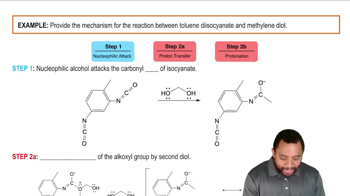Show how you would convert the following starting materials to the indicated nitriles:
(a) phenylacetic acid → phenylacetonitrile
 Verified step by step guidance
Verified step by step guidance Verified video answer for a similar problem:
Verified video answer for a similar problem:



 9:32m
9:32mMaster NAS - The Three Rules with a bite sized video explanation from Johnny
Start learning